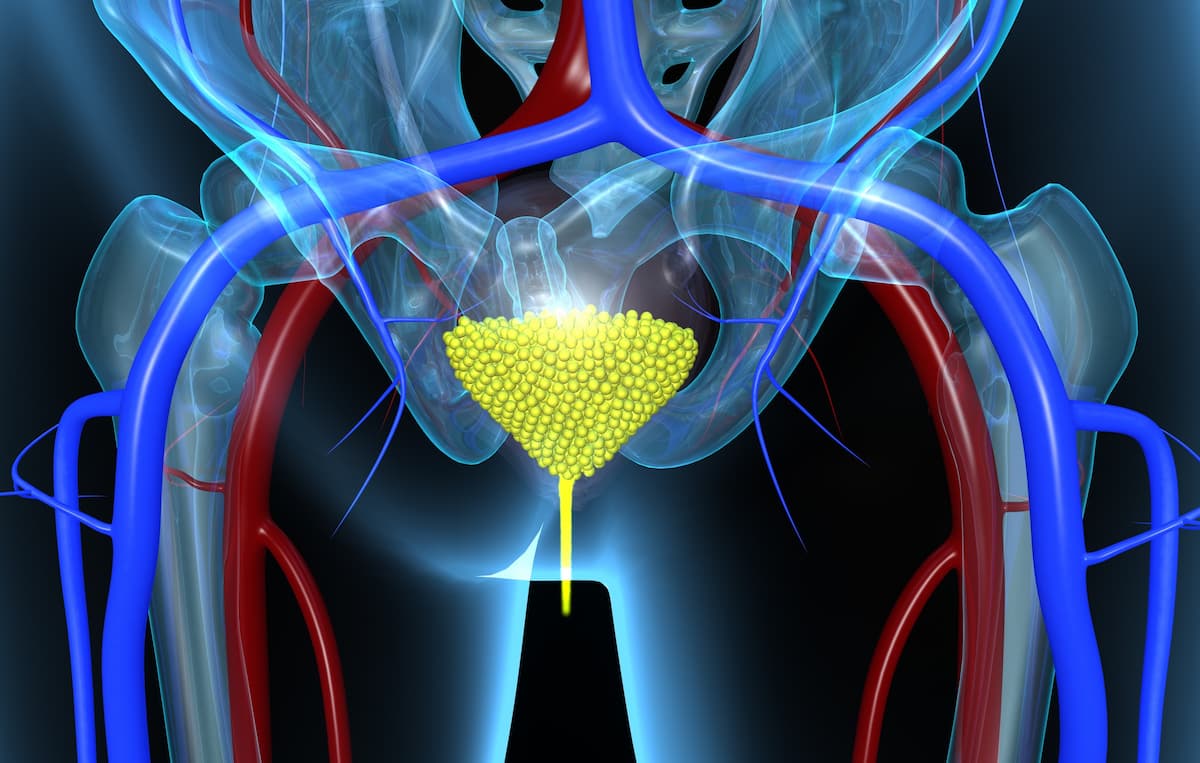Robust Responses Occur With UGN-102 in Recurrent Intermediate-Risk NMIBC
Data from the ENVISION trial may support UGN-102 as a well-tolerated, efficacious treatment in non–muscle-invasive bladder cancer.
“These observations provide further evidence that UGN-102 may represent a well-tolerated and efficacious treatment option for patients with low-grade, intermediate-risk NMIBC,” according to the study authors.

Patients with low-grade, recurrent, intermediate-risk non–muscle-invasive bladder cancer (NMIBC) experienced enduring responses following treatment with the intravesical mitomycin solution UGN-102, according to findings from the phase 3 ENVISION trial (NCT05243550) presented in a poster session at the 2025 American Society of Clinical Oncology (ASCO) Annual Meeting.1
Findings showed that of the 240 patients enrolled, the complete response (CR) rate at 3 months with UGN-102 was 79.6% (95% CI, 73.9%-84.5%); the estimated 18-month duration of response (DOR) rate after achieving CR at 3 months was 80.6% (95% CI, 74.0%-85.7%). Twenty percent of patients had a non-CR, which comprised residual disease (15%), disease progression (2.9%), indeterminate response (0.83%), and missing data (2.1%).
“These observations provide further evidence that UGN-102 may represent a well-tolerated and efficacious treatment option for patients with low-grade, intermediate-risk NMIBC,” lead study author Sandip Prasad, MD, a minimally invasive urologic oncologic surgeon of Morristown Medical Center/Atlantic Health System and Garden State Urology in Morristown, New Jersey, and coinvestigators wrote in a poster presented during the meeting. “UGN-102 would potentially be the first approved medical therapy for this condition.”
The data readout follows the FDA’s Oncologic Drugs Advisory Committee May 2025 decision to vote 5 to 4 against the risk/benefit profile of UGN-102 for the treatment of patients with recurrent, low-grade, intermediate-risk NMIBC.2
The committee had discussed whether randomized studies should be required in the future to assess treatment efficacy in this specific NMIBC setting, and whether the overall risk/benefit profile of UGN-102 was favorable for these patients, specifically those with recurrent disease.
Standard therapy for patients with low-grade, intermediate-risk NMIBC is transurethral resection of bladder tumor (TURBT). UGN-102 is a reverse thermal gel containing mitomycin given via intravesical instillation in the outpatient setting and has shown effectiveness at replacing surgery in prior data.3,4
In the ongoing, prospective, international, single-arm, open-label phase 3 ENVISION trial, investigators tested the efficacy and safety of UGN-102 as treatment for patients with recurrent low-grade, intermediate-risk NMIBC. UGN-102 was administered as 6 once-weekly intravesical instillations (75 mg of mitomycin) in an outpatient setting.1
To be eligible for enrollment, patients must have had history of at least 1 prior episode of low-grade NMIBC that required treatment with TURBT, disease that was confirmed by cystoscopy and cold-cup biopsy at screening or within 8 weeks prior to screening, negative voiding cytology for high-grade disease, and intermediate-risk disease, which was defined as having 1 or 2, not all, of the following: multiple tumors, longest tumor diameter larger than 3 cm, and/or early or frequent recurrence. Intravesical chemotherapy, except for a single dose immediately after prior TURBT within the past 2 years, was not permitted.
The primary end point was 3-month CR; secondary end points were DOR and safety.
Patients who achieved a CR at 3 months entered the follow-up period, of which they will return to clinic every 3 months for up to 2 years for response evaluation. Those who remain disease free will continue to return to clinic every 6 months for up to another 3 years, totaling 5 years of follow-up.
If patients did not achieve a CR at 3 months, they were given investigator-chosen standard therapy and then entered the follow-up phase.
Data presented at the 2025 ASCO Annual Meeting included that from an analysis with a data cutoff date of October 2, 2024, which provided 18 months of follow-up after 3-month CR. All enrolled patients (n = 240) received at least 1 dose of UGN-102 and 95% of patients received all 6 weekly doses.
Baseline characteristics showed that mean age was 68.8 years (standard deviation, 12) and 61% of patients were male; most were White (98%). Pre-biopsy, most patients had a tumor diameter within 3 cm (92%) and aggregate tumor burden also within 3 cm (81%). Eighty-three percent of patients had multiple tumor counts.
Further findings showed that, over a median follow-up of 18.7 months, the median DOR was not estimable due to the paucity of disease recurrence.
Regarding safety, adverse effects (AEs) were generally mild to moderate in severity and resolved. Treatment-emergent AEs occurred in 57% of patients, the most common of which being dysuria (23%), hematuria (8.3%), urinary tract infection (7.1%), pollakiuria (6.7%), fatigue (5.4%), and urinary retention (5.0%). Serious AEs occurred in 12% of patients, 2 of which were found to be related to treatment (urinary retention and urethral stenosis).
Three grade 4 AEs were reported but were unrelated to UGN-102: metastatic lung cancer, a cerebrovascular event, and pancreatic adenocarcinoma. Three deaths occurred and were not treatment related, consisting of a cardiac event, pneumonia, and unknown cause.
References
- Prasad SM, Mihaylov NV, Khuskivadze A, et al. Duration of response (DoR) following treatment with UGN-102 in patients with recurrent, low-grade, intermediate-risk, non-muscle invasive, bladder cancer: 18-month DoR data from the phase 3 ENVISION trial. J Clin Oncol. 2025;43(suppl 16):4598. doi:10.1200/JCO.2025.43.16_suppl.4598
- FDA. May 21, 2025 meeting of the Oncologic Drugs Advisory Committee (ODAC). YouTube. Accessed June 6, 2025. https://www.youtube.com/live/5ecyDbK9ezc
- Prasad SM, Huang WC, Shore ND, et al. Treatment of low-grade intermediate-risk nonmuscle-invasive bladder cancer with UGN-102 ± transurethral resection of bladder tumor compared to transurethral resection of bladder tumor monotherapy: a randomized, controlled, phase 3 trial (ATLAS). J Urol. 2023;210(4):619-629. doi:10.1097/JU.0000000000003645
- Prasad SM, Shishkov D, Mihaylov NV, et al. Primary chemoablation of recurrent low-grade intermediate-risk nonmuscle-invasive bladder cancer with UGN-102: a single-arm, open-label, phase 3 trial (ENVISION). J Urol. 2025;213(2):205-216. doi:10.1097/JU.0000000000004296